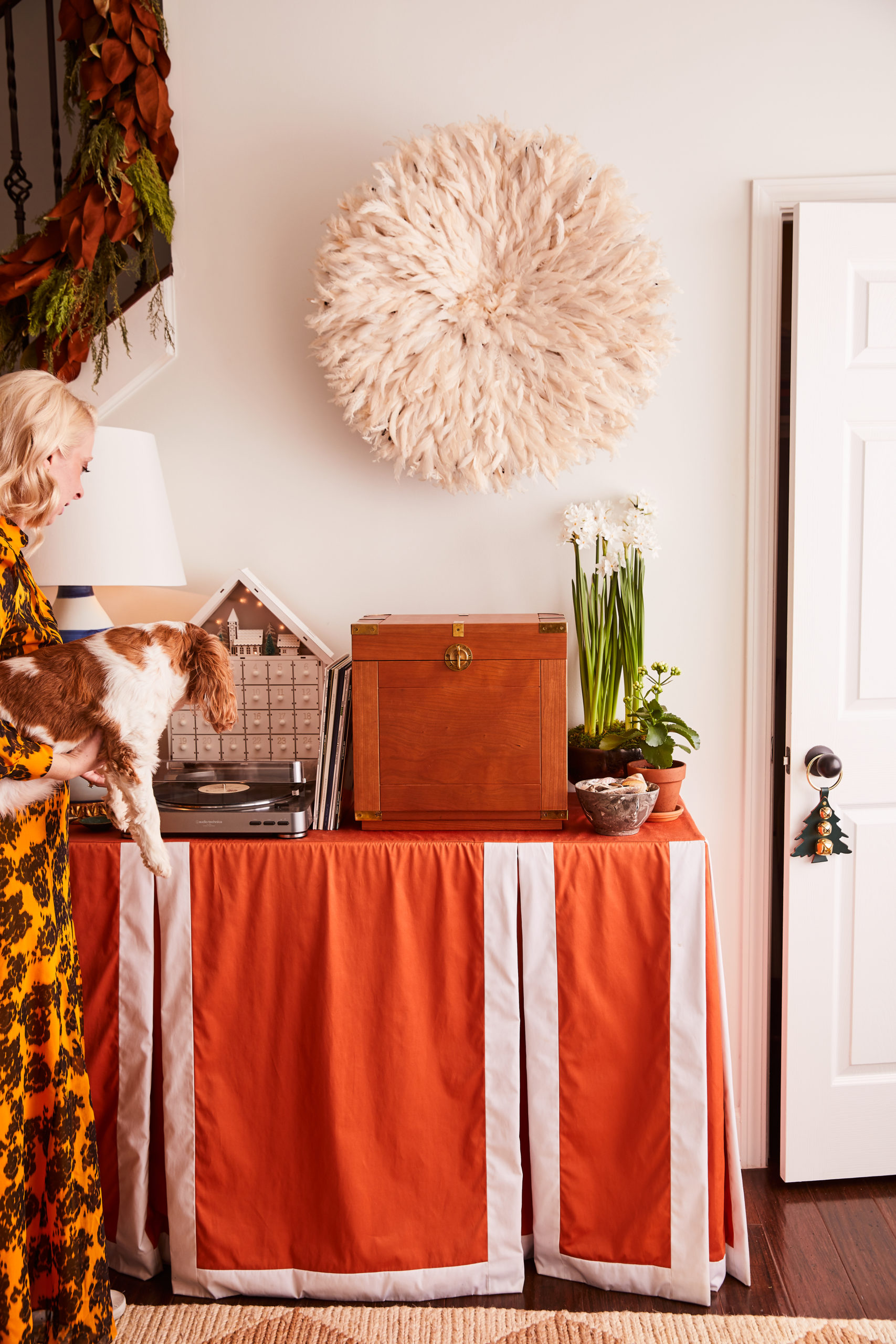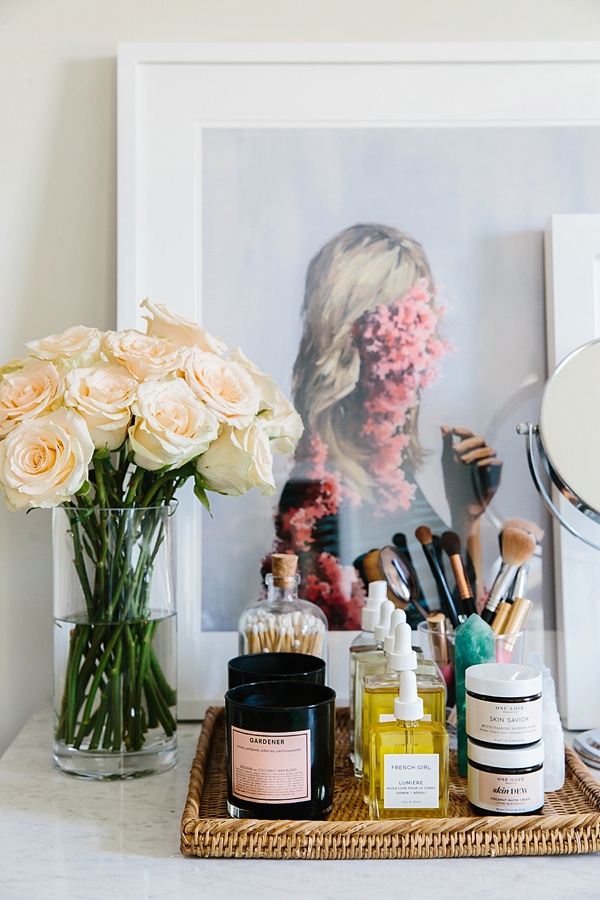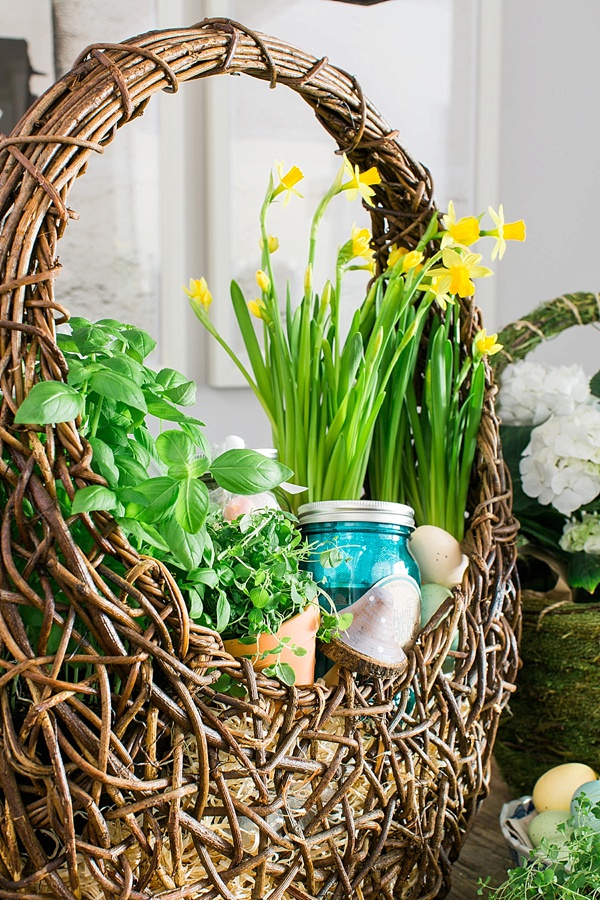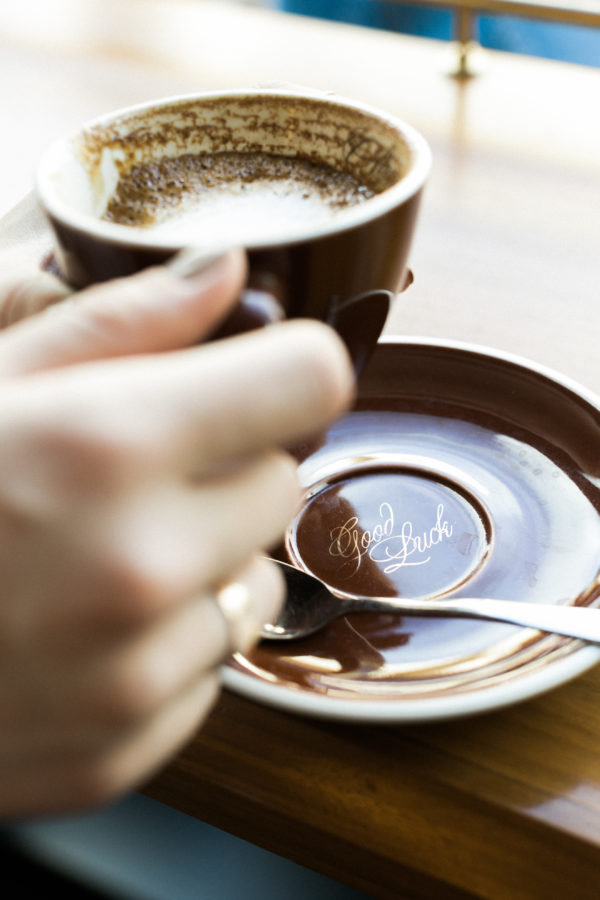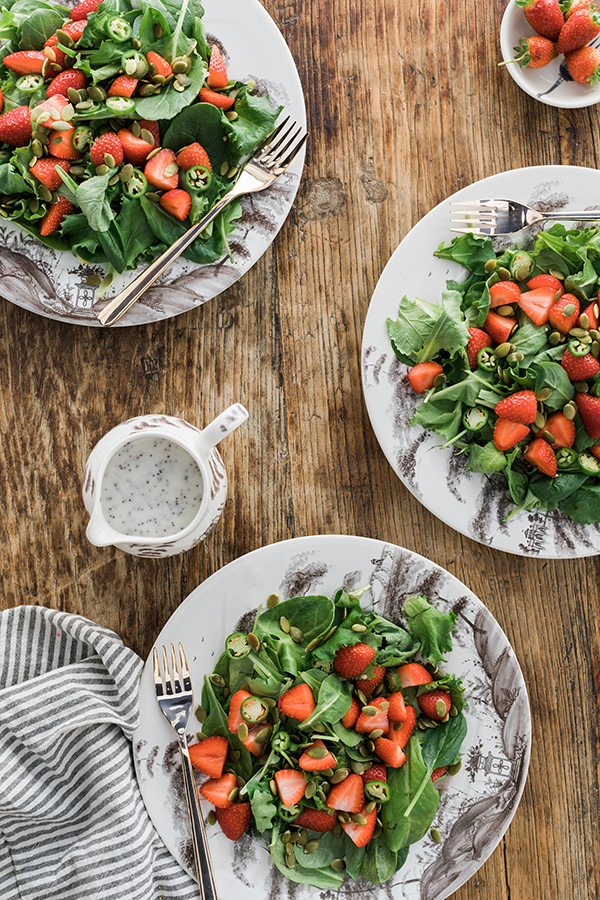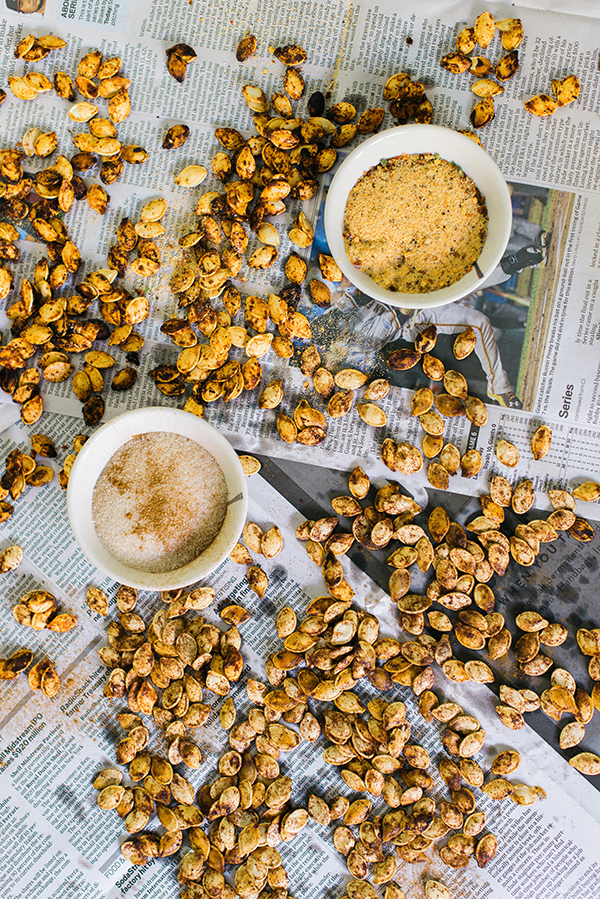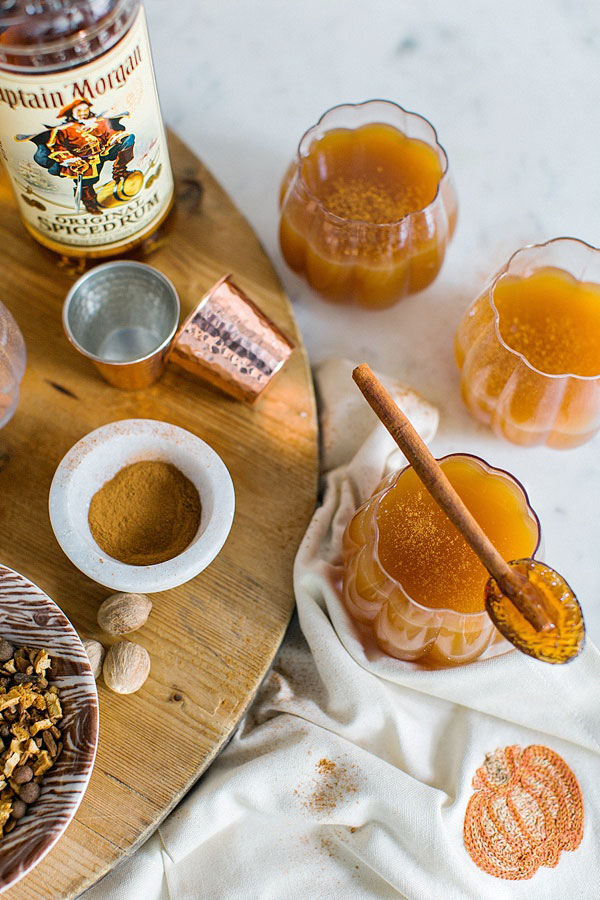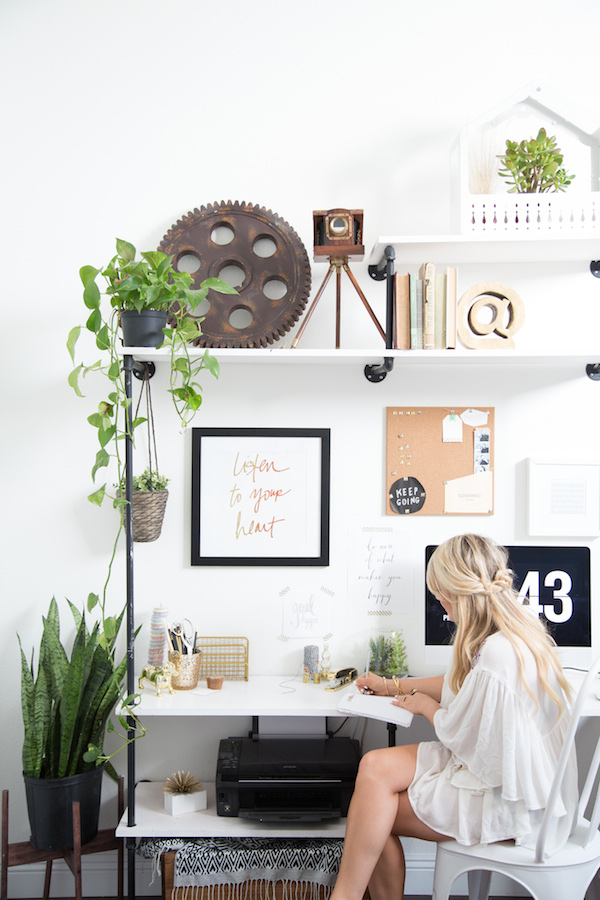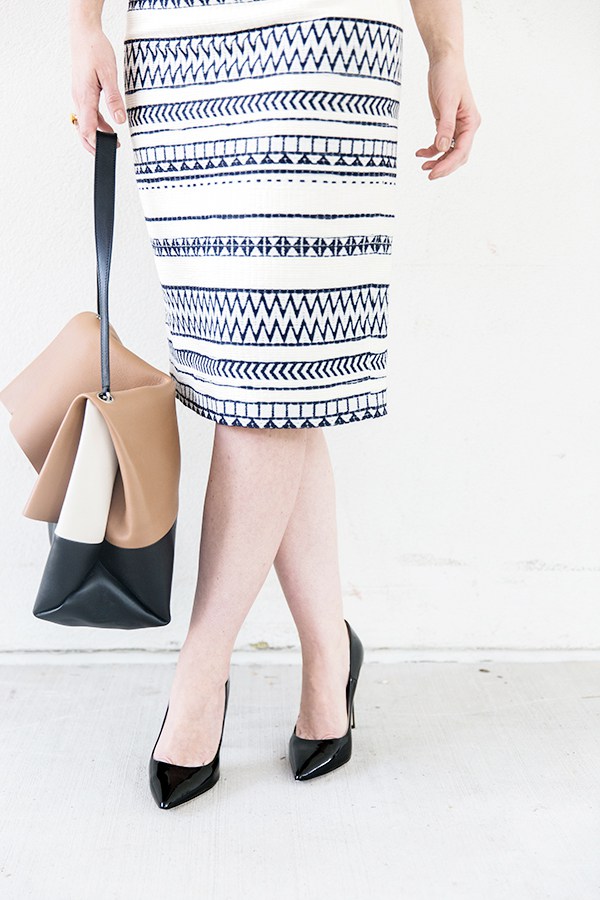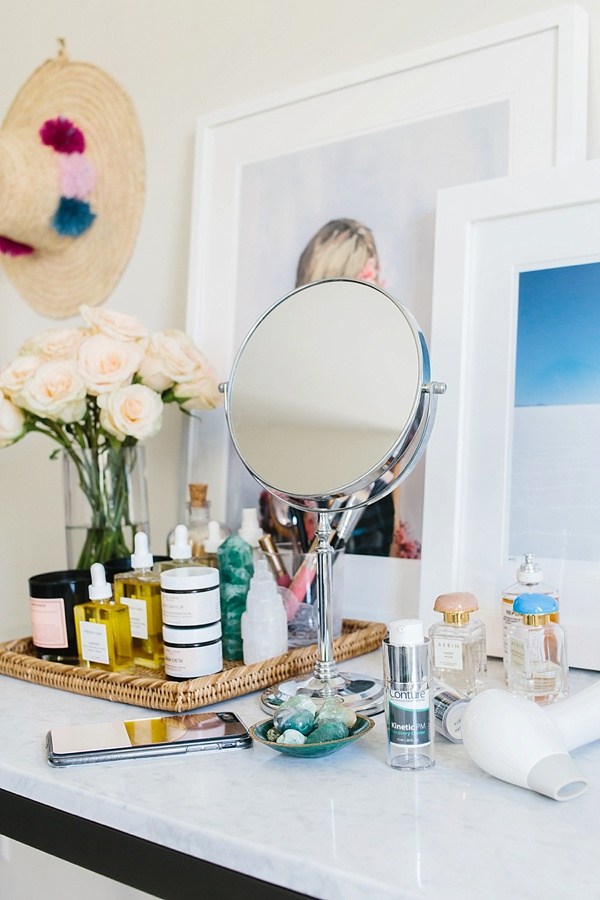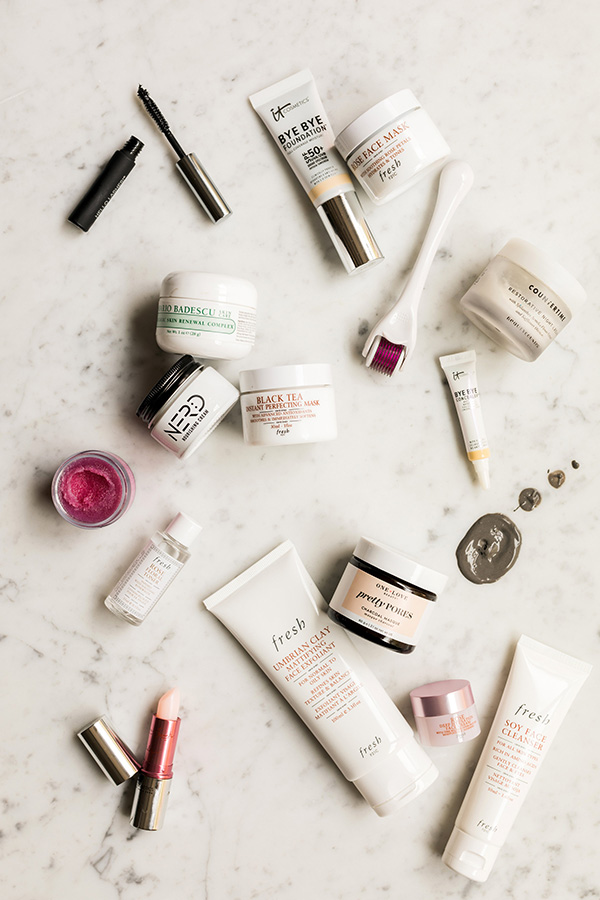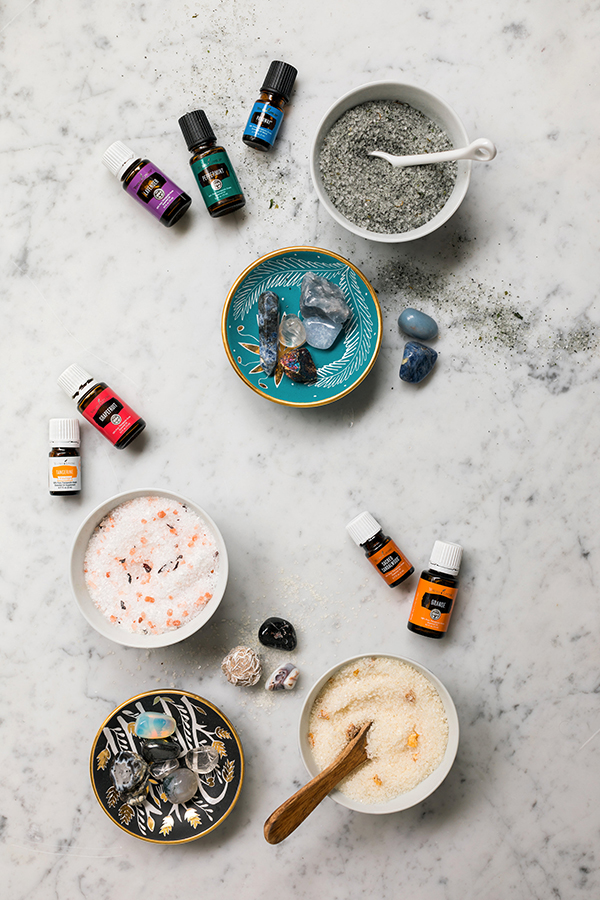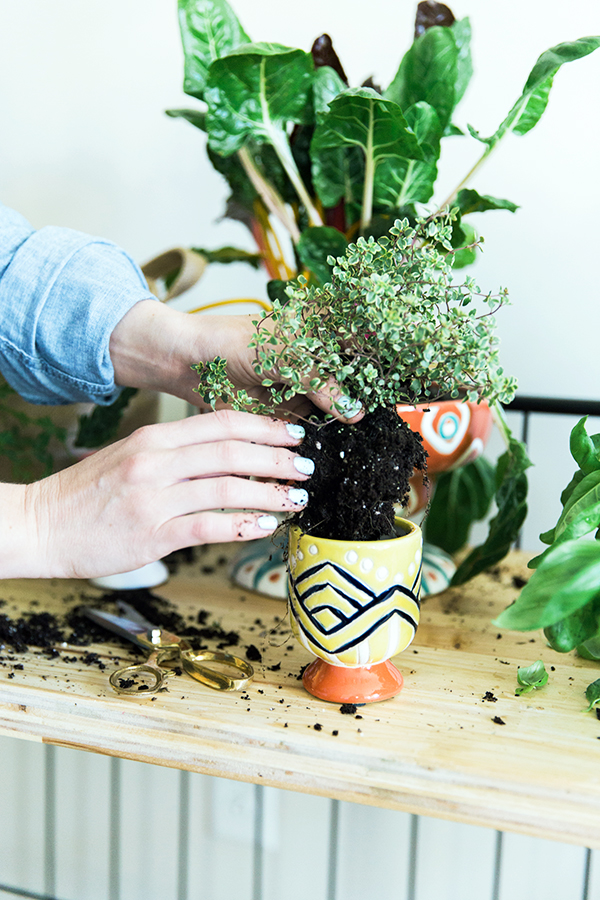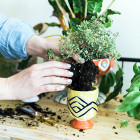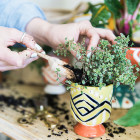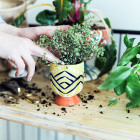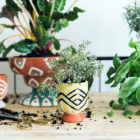




There’s nothing I love more than infusing fresh herbs from my kitchen herb garden into whatever I’m cooking or cocktailing. And whether you consider yourself an expert or novice gardener, mastering a small indoor herb garden is easier than you think.
To get started, gather planters of different shapes and sizes (these are from Anthropologie), organic potting soil and your preferred seeds or already-planted herbs. When selecting your preferred herbs, think of how you’ll use them. Sprigs of thyme add a crisp bite to everything from roasted vegetables to hearty soups. Fresh cut basil is the perfect way to garnish a salad, and a necessity for any margherita pizza. Parsley garnishes every dish with a much-needed pop of color. Mint is a mojito staple and will make your entire kitchen smell heavenly. And if you find yourself regularly cooking with one herb more than others, plant that herb in one of the larger planters and double up on seeds.
When moving the herbs from the store containers to your planters, gently break up the roots with your fingers and place the herbs in the center of your planter. Then, surround the plant with additional soil. Lightly pat down the soil, but make sure not to overcrowd the herbs or add too much soil—you want to always give the plant room to grow. (See the slideshow below for an easy four-step tutorial.)
Each herb will vary slightly when it comes to water and sunlight. Make sure to read the directions accompanying each plant. For example, herbs like basil, need more sunlight and water than rosemary, which will flourish even when being neglected. I’d also suggest investing in a plant mister for the herbs, and keep in mind that as the herbs begin to outgrow their original planters, you can easily replant them outside where they’ll have more room to flourish, or split the herb to keep one portion inside to have on hand, and the other remaining outside.
Your edible herb garden, filled with sage, rosemary, and other fragrant herbs, will be a much-loved addition to your kitchen. Do you plant and use herbs regularly? Truly, MKR

